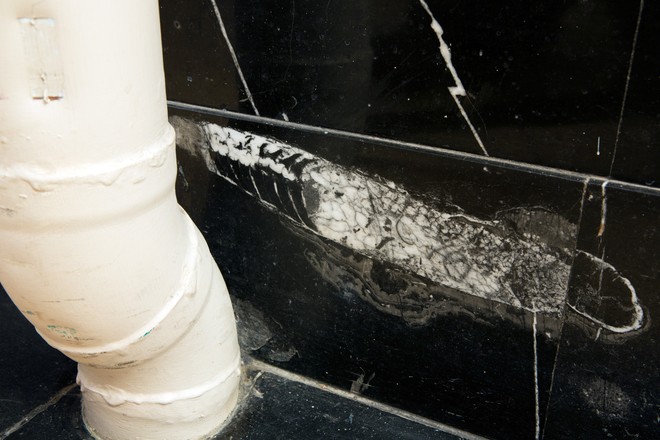Nautiloid fossil
c400 million years ago
Set within the black marble skirting just to the right of the door leading into the Dixson room, under the fire extinguisher, is the oldest object in the library – a fossilised Orthoceras nautiloid which dates to the Silurian period of the Paleozoic era, approximately 400 million years ago. The name means ‘straight horn’ and refers to the long, straight conical shell. An ancestor of the modern squid, the Orthoceras nautiloid could grow up to 6 metres in length, and moved through the water backwards with air trapped inside its shell to keep it afloat.
From the 2500 known species of fossil nautiloids, only a handful of species survive today.
A landmark transition
During the Silurian period of the
Paleozoic era, around 443–416 million years ago,
the first land plants and animals appear, and life in the oceans diversified
and thrived. Australia at this time was part of the
supercontinent Gondwana.
With climbing temperatures and rising sea levels, huge reef systems developed and flourished
— evidenced today in the many limestone rock formations that date to this era. Fish
species diversified, with the appearance of freshwater fish and the first fish
with jaws.
On land, the first true plants began to take root around 430 million years ago. They evolved
rigid stems, enabling them to stand upright, and specialised tubular tissues which
allow the transport of water and nutrients and are common to all vascular
plants today. Along with mosses and other plants, they provided a thin layer of
waterside vegetation that encouraged more aquatic animals to make the
transition to land. The first of these were the ancestors of centipedes and
spiders, the arthropods and arachnids.
The Silurian period drew to a close with a series of
extinction events linked to climate change, but these were relatively minor
compared with those of other geologic periods.



 Back to list
Back to list